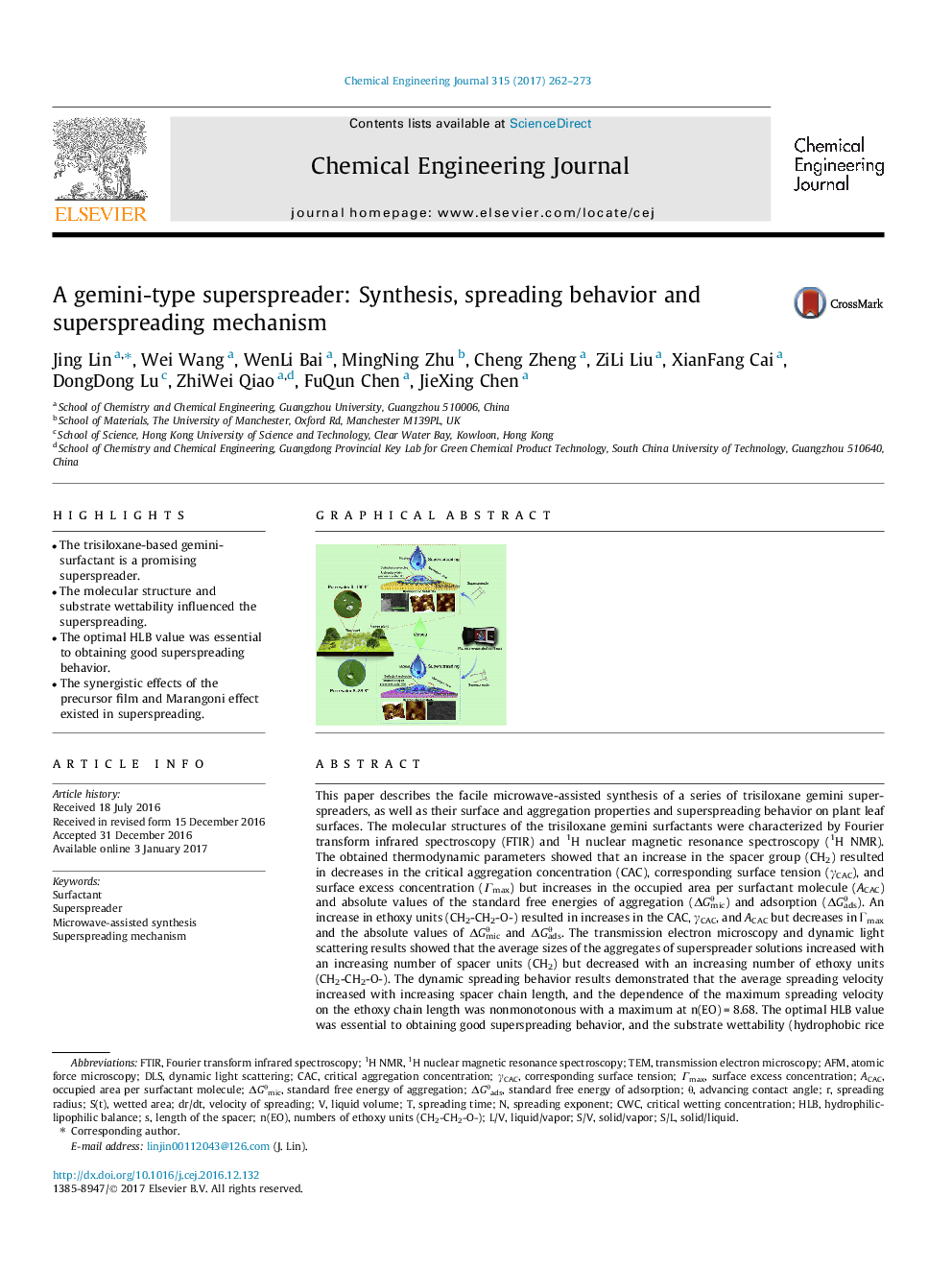| Article ID | Journal | Published Year | Pages | File Type |
|---|---|---|---|---|
| 6466360 | Chemical Engineering Journal | 2017 | 12 Pages |
â¢The trisiloxane-based gemini-surfactant is a promising superspreader.â¢The molecular structure and substrate wettability influenced the superspreading.â¢The optimal HLB value was essential to obtaining good superspreading behavior.â¢The synergistic effects of the precursor film and Marangoni effect existed in superspreading.
This paper describes the facile microwave-assisted synthesis of a series of trisiloxane gemini superspreaders, as well as their surface and aggregation properties and superspreading behavior on plant leaf surfaces. The molecular structures of the trisiloxane gemini surfactants were characterized by Fourier transform infrared spectroscopy (FTIR) and 1H nuclear magnetic resonance spectroscopy (1H NMR). The obtained thermodynamic parameters showed that an increase in the spacer group (CH2) resulted in decreases in the critical aggregation concentration (CAC), corresponding surface tension (γCAC), and surface excess concentration (Îmax) but increases in the occupied area per surfactant molecule (ACAC) and absolute values of the standard free energies of aggregation (ÎGθmic) and adsorption (ÎGθads). An increase in ethoxy units (CH2-CH2-O-) resulted in increases in the CAC, γCAC, and ACAC but decreases in Ðmax and the absolute values of ÎGθmic and ÎGθads. The transmission electron microscopy and dynamic light scattering results showed that the average sizes of the aggregates of superspreader solutions increased with an increasing number of spacer units (CH2) but decreased with an increasing number of ethoxy units (CH2-CH2-O-). The dynamic spreading behavior results demonstrated that the average spreading velocity increased with increasing spacer chain length, and the dependence of the maximum spreading velocity on the ethoxy chain length was nonmonotonous with a maximum at n(EO) = 8.68. The optimal HLB value was essential to obtaining good superspreading behavior, and the substrate wettability (hydrophobic rice plant and hydrophilic mango plant surfaces) greatly influenced the superspreading. The synergistic effects from the precursor film and Marangoni effect existed in the proposed superspreading model.
Graphical abstractDownload high-res image (69KB)Download full-size image
